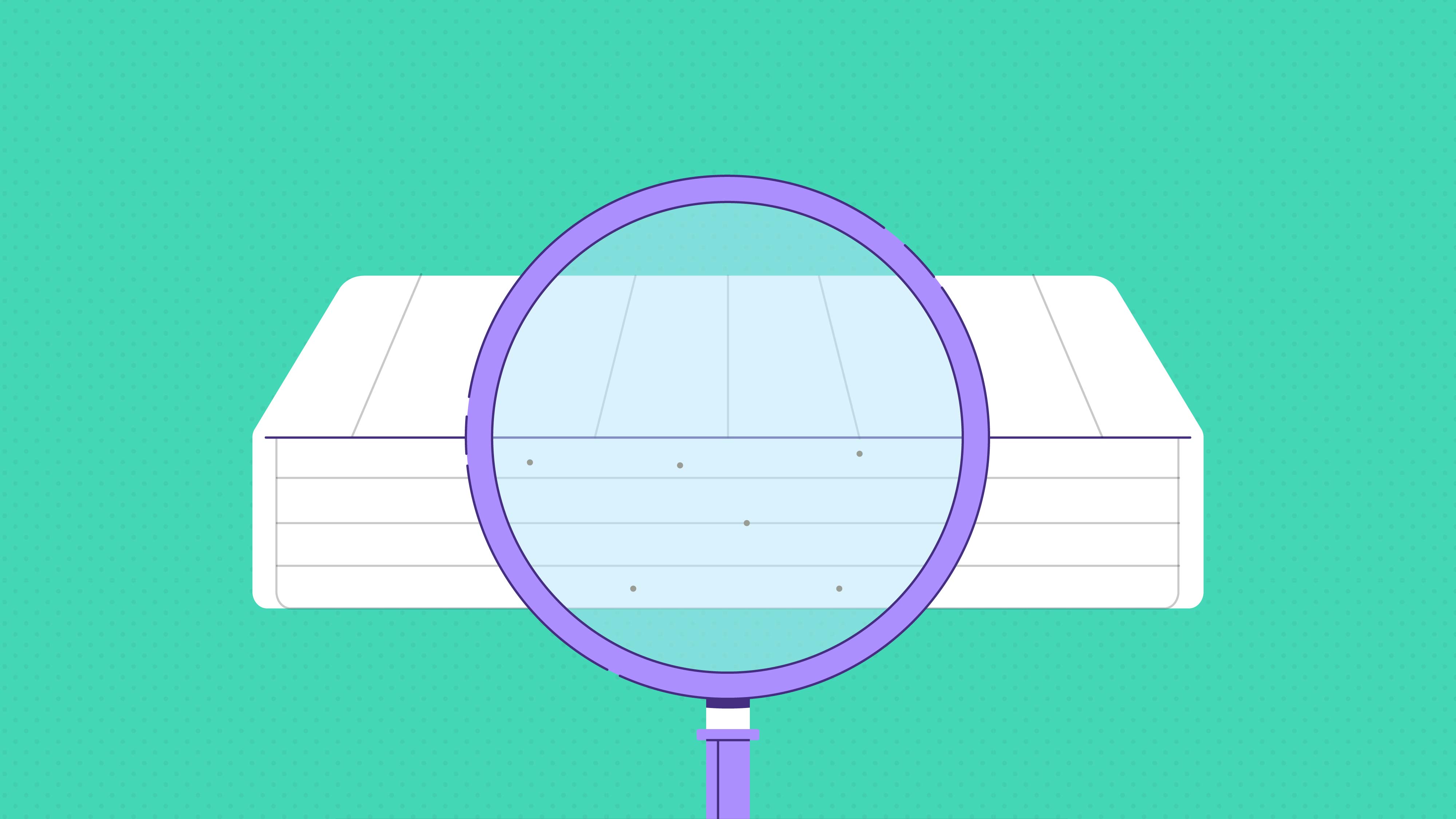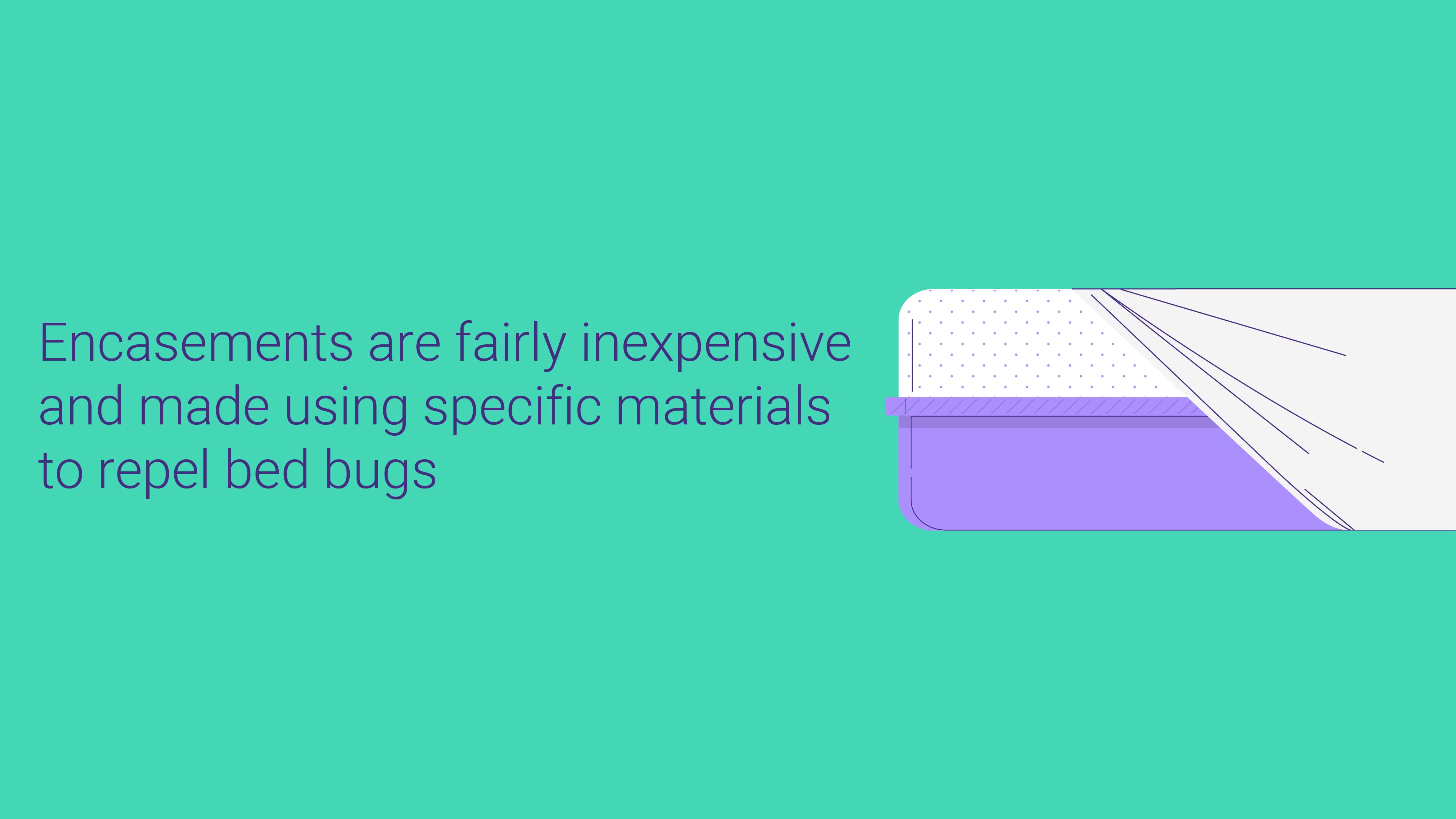
How to Get Rid of Bed Bugs in a Mattress

Your worst nightmare has come true— you just noticed some tiny dark specks around the edges of your mattress. You can’t often see them without a magnifying glass, but bed bugs can congregate on a mattress faster than you can exterminate them. Bed bugs hide in dark, tiny spaces, and so naturally, mattresses are one of their favorite places to live.
Bed bugs bite and those bites turn into uncomfortable, itchy welts. Bed bugs also spread rapidly, so getting rid of them at the first sign of trouble is the surest way to save your bedroom and keep your home happy and healthy. This article will discuss the best ways to get rid of bed bugs and help you decide whether or not it’s time for a new mattress altogether.
How Do I Know My Mattress Has Bed Bugs?
Bed bugs are microscopic, reddish-brown insects roughly the size of an apple seed. They can’t fly, but they love to burrow in dark, small spaces like headboards, closets, and inside mattress seams. Some people don’t realize they have bed bugs until they notice small bite marks on their skin.
If your itchy bites form only after you’ve been in bed, the issue may be bed bugs. A few other signs that point to a bed bug infestation:
- A musty odor
- Tiny dark spots on the mattress (waste left behind from bed bugs)
- Bed bug egg husks or shells (sometimes these are not visible to the naked eye)
Once you’ve noticed these things, it’s time to strip your mattress and investigate further. Take off your sheets, protector, everything. If you use a box spring, peel back the dust cover fabric and look at the seams. Look at spaces around your bed, like your nightstand, for other signs of bed bugs.
Time to upgrade your entire bed set? Read our guide of finding the best mattress to compare your options.
Getting Rid of Bed Bugs

Once you’ve determined you do in fact have a bed bug problem, you can do a few things to snuff them out. Thankfully, bed bugs don’t carry diseases, but they are a nuisance and you’ll want to get rid of them as soon as possible.
Wash and Sanitize Everything
After you’ve stripped your bed, wash all your bedding in hot water if possible, which will kill any lingering bacteria. You cannot treat your bedding with insecticide, so washing in hot water (120 degrees Fahrenheit minimum) is the next best thing.
If you cannot machine wash your bedding for whatever reason, try drying it on high heat in the dryer.
Next, spot clean your mattress using a stiff brush and a water and vinegar solution or baking soda. Scrub your bed frame at the seams or in any places you’ve found evidence of bed bugs. Vacuum your room— and not just the carpet, but the mattress and baseboards around the bed, too (just use the hose attachment on your vacuum).
Any area in the room with crevices or corners is a good hiding spot for bed bugs, so inspect everything, even dresser drawers. Yes, it’s time-consuming, but worth it in the end if you can wipe them out.
Note: when vacuuming, do not use a brush attachment as the bed bugs can burrow in the bristles. Use a hose and then dispose of the vacuum bag once you’re done or thoroughly clean out your filter.
Disassemble Your Bed
Taking apart your bed may sound extreme, but bed bugs can hide easily in the seams or bed legs. If you have a box spring, shine a flashlight into the underside and look for any evidence of infestation. Small holes or tears in the box spring dust cover are potential hiding places.
While a good mattress can help alleviate pressure points, they offer only a fraction of the benefits the best adjustable beds can provide. Read our guide to learn more.
Seal Up Holes
Pest control experts recommend sealing up any holes where pipes and wires meet the walls and floor and any cracks in baseboards or molding. You can do this with caulk from the nearest hardware store.
Treat Infested Areas
After you’ve cleaned and vacuumed and scrubbed, it’s time to spray the bed bugs so they don’t come back. Spray EPA-approved liquid insecticides on any affected areas, taking care not to excessively spray your mattress. Follow the directions on the bottle for best results. 95% of the bed bug infestation will be within five feet of your bed.
Take care to only use insecticides specified for mattresses. Treating your mattress with insecticide should be a last resort when you really don’t want to (or can’t) get rid of your bed. Most insecticides kill bed bugs on contact, but once the solution dries, it has no more effect on bed bugs that come across it later. That means you would have to repeatedly spray your mattress to kill all the bed bugs, introducing potentially harmful chemicals into your sleeping space.
Steam!
If there’s one thing bed bugs hate, it’s heat. High temperatures (in excess of 120 degrees Fahrenheit) are lethal to bed bugs and bed bug eggs. You can use a steamer on your mattress, but if it doesn’t get super hot, it might not do much. The more pressure behind the steam, the better— most steamers people have in their homes do not get hot enough or spray with high-pressure.
An industrial steamer is very expensive, even though the heat treatment it provides is very effective. If you’re not ready to spend $500 on a good steamer, you could save that money to hire a pest management company, or just buy a new mattress.
Use a Protector or Encasement
After you’ve thoroughly vacuumed, cleaned, and treated your room and mattress, place your mattress in an encasement. Another solution is a durable mattress protector, but not all protectors encase the entire bed, which will keep out bed bugs.

Encasements are fairly inexpensive and made using specific materials to repel bed bugs. Many of them are also waterproof, so they double as a shield against stains or spills.
To get the most comfortable sleep and wake up every morning pain-free, read our guide on choosing the best mattress for back pain.
Preventing Bed Bugs
Perhaps you aren’t dealing with bed bugs yet, but you want to take some precautions. The most economical solution is to defend yourself against any possible infestation in the future. As soon as you purchase a new mattress, buy a mattress protector to go with it. There are various types of protectors. Some envelope your entire mattress. The openings are sealed with zippers and most can be easily cleaned in the washing machine.
Keeping your room clean and sanitary can help, but sometimes bed bugs can’t be avoided no matter how clean your house is! At that point, it might be time to buy a new mattress. Still, it doesn’t hurt to regularly dust and scrub any possible hiding places.
Avoid secondhand furniture and mattresses if you can— this can bring bed bug intruders right into your home. If you’re planning on buying any secondhand goods, inspect them thoroughly before bringing them home.
If you use a shared washroom, use high heat temperatures whenever possible and transport your clothing in plastic bags. Check your mattress for bed bugs every time you wash your bedding. Staying vigilant about bed bugs can help you spot a problem early before it gets out of control.
When Should I Get Rid of My Mattress?
Throwing out your bug-infested mattress is a fast and easy solution, but it might not exterminate the problem completely. Sometimes the bed bugs have gone beyond your mattress into other areas of the room. If you need to call a pest control company to solve the problem, it may be time to choose a new mattress.
Additionally, if your mattress already needs replacing because of other issues, such as sagging, tearing, or just overall poor support, getting a new, bug-free mattress might just be the best solution.
Interested in the benefits of memory foam? Read our other guide on finding the best memory foam mattress for your sleep needs.
Can You Get Rid of Bed Bugs?
Yes, it is possible to get rid of bed bugs using your own DIY bed bug control solutions. All you need is a vacuum cleaner with a hose attachment, a washer and dryer, and maybe some insecticide. But if you think it’s time to call the exterminator because your problem has gotten out of hand, it may be time to chuck your mattress and bedding and start over.
